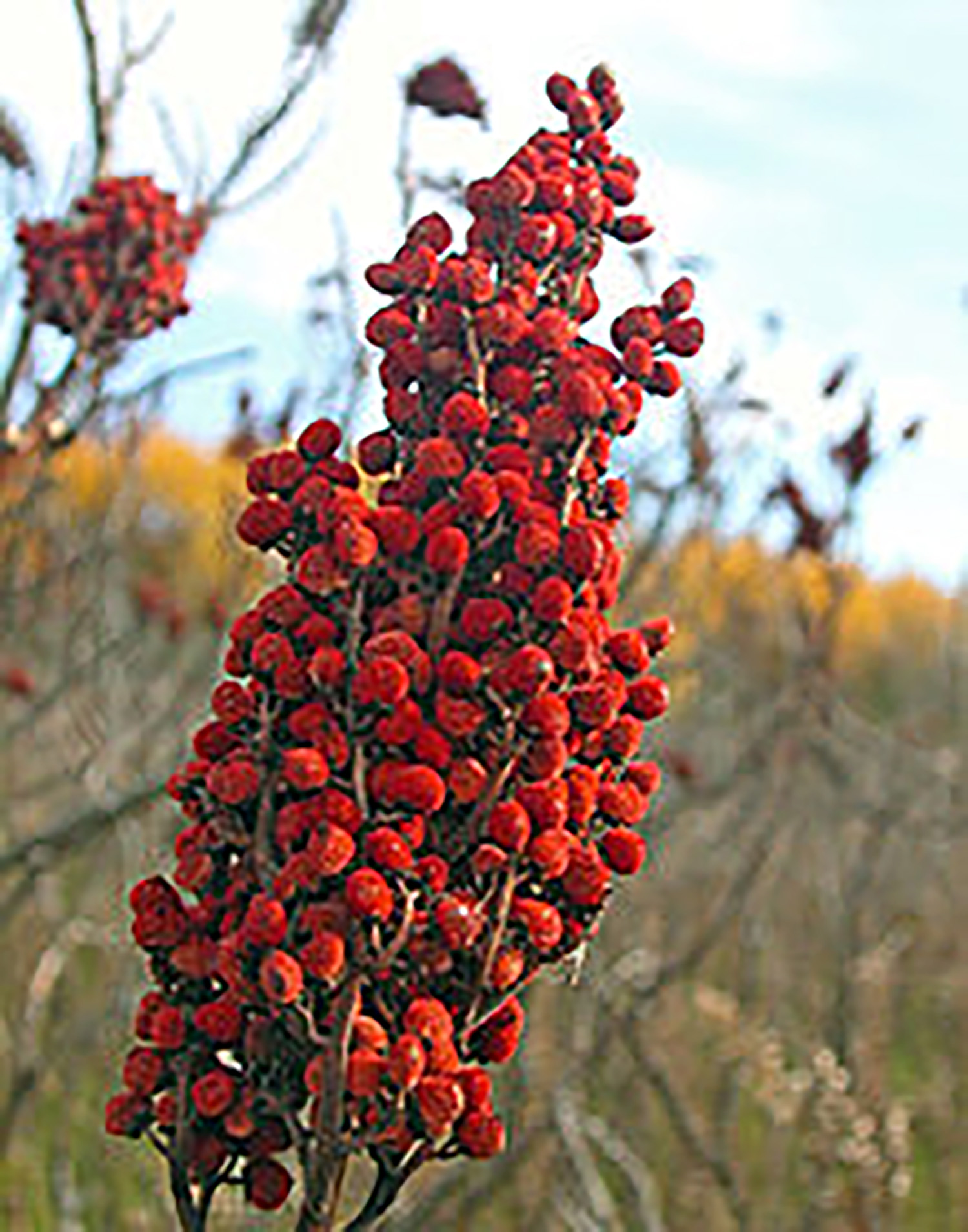
Incorporating new ingredients into your repertoire is one of the most fun and exciting things about feeling more confident in the kitchen. When I was working as a chef, I would always be on the lookout for specialty ingredients from artisan small-batch producers and farmers saving or reintroducing lost heirloom crops. This is how I found myself as an advocate for Rancho Gordo Beans, Anson Mills Grains, and Burlap & Barrel Spices. Just this week, I ordered some tinned fish from Spain–Mariscadora Tuna Belly in Galician Butter that is churned by a woman named Carmela. The package arrives today, and I cannot wait to put it in my mouth.
The search for flavors that I have not yet experienced has led me down some interesting rabbit holes. The latest involves a tangy little drupe that grows wild across the Mediterranean, through Africa and Asia, and all over North America. A “drupe” is a fruit with a hard covering that protects a seed, like a peach or an olive. Drupes are often known as “stone fruits” and include familiar favorites, including cherries, apricots, dates, plums, mangoes, coconuts, and our featured spice of the month, sumac.
The name sumac comes from an Arabic word that means red–apt considering the fruit of the sumac tree are fuzzy, red, and grow in clusters. There are sumac trees that yield white fruit, but they are considered to be a non-culinary variety and might be poisonous. The fruit was used in ancient Europe and throughout the Arab world as a spice, a dye, and for medicinal applications. Before lemon trees were brought to Europe, ancient Romans relied on sumac to bring tanginess to their meats, fish, and vegetables. Perhaps it is because access to lemons was limited in the region, sumac became prolifically used in Mediterranean cuisine. In the United States, the use of sumac is just now growing in popularity.
Since sumac isn’t cultivated as an agricultural plant, the fruit is harvested from wild plants seasonally. The sumac berries are dried and crushed before being packed with salt and allowed to cure, yielding a bright red powder. The flavor of sumac is bright and tangy with a strong floral aroma. Coarse ground sumac lends a crunchy coarseness to a dish, releasing bursts of flavor as you chew. Sumac is a terrifically versatile spice that can be sprinkled on top of nearly anything. Add a dusting to some feta cheese with olive oil or hummus; use sumac in your dry rubs for fish, chicken, or meat, or add it as a finishing seasoning at the table.
Stop by the Churchill County Library in April to get a sample of sumac to try out this delicious spice.
Sparkling Sumac Lemonade By Tama Matsuoka Wong
INGREDIENTS: For the Sumac Syrup
- 2 c water
- 2 c sugar
- 3 T ground sumac
INGREDIENTS: For the Soda
- 1 c club soda
- ¼ c sumac syrup
- 1 T lemon juice
- 1 lemon cut into wedges
DIRECTIONS:
- For the Sumac Syrup: Combine water and sugar in a small saucepan. Heat over medium heat, stirring occasionally, until the sugar is dissolved. Allow to cool to room temperature. Add sumac, stir to combine, and allow to infuse for 5 minutes. Strain through a fine mesh strainer. Sumac syrup can be stored in the refrigerator for up to 5 days.
- For the Soda: For each serving, combine 1 c club soda, ¼ c sumac syrup, and 1 T lemon juice in a cup. Add ice and stir. Serve immediately with lemon wedges.










Comment
Comments